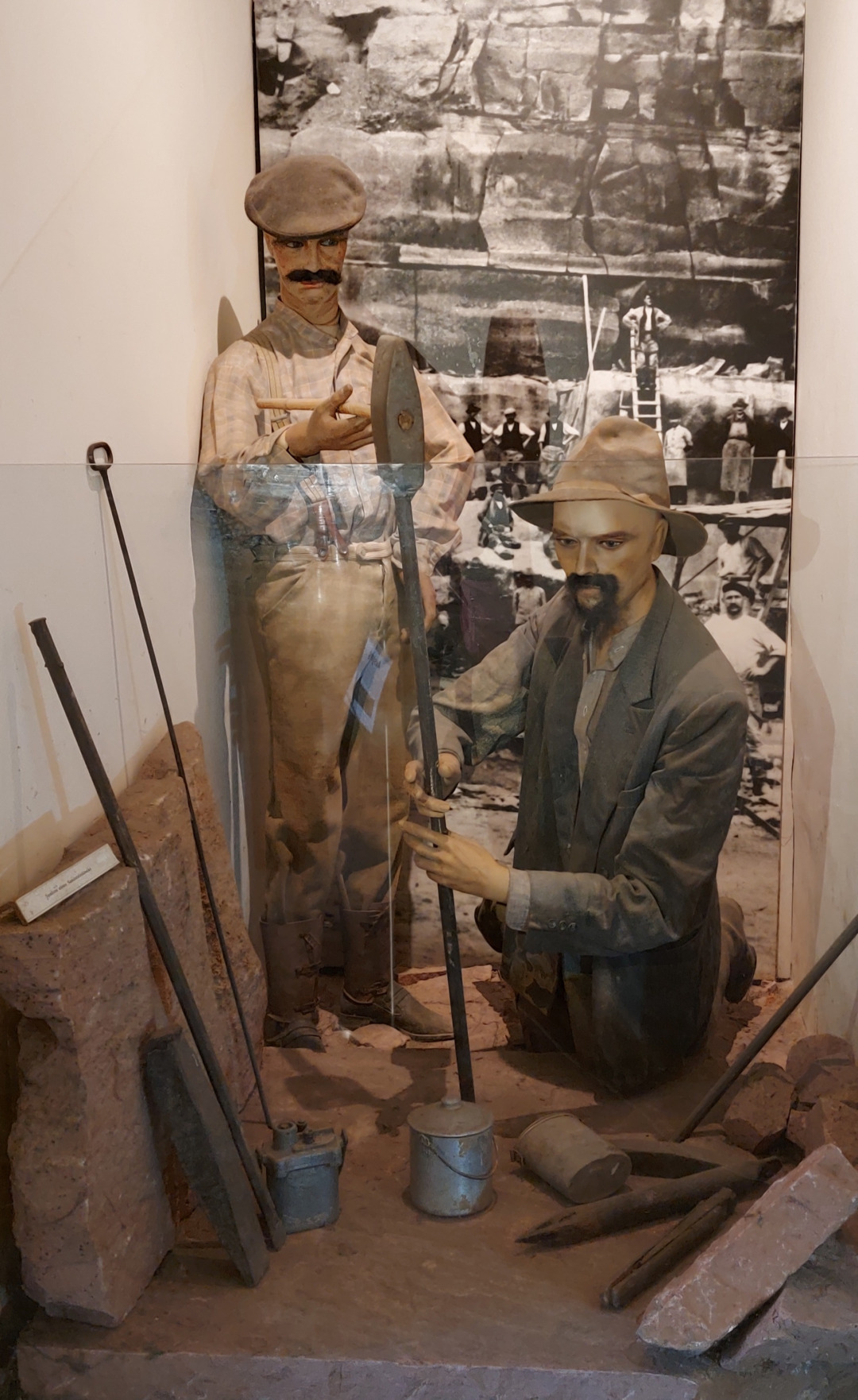
The quarry workers are depicted against the photo backdrop of a quarry. This is not about the design of the stone, but about the extraction of the material. Breaking stone blocks out of a rock face was a very hard job. The workers came to Eberbach every day in long marches, often lasting several hours, from the surrounding villages. The work in the quarry was dangerous, there were many accidents. In addition, the dust was hard on the lungs of the men, who had to march home again in the evening. Most of the time they still had a small farm to look after. In the winter months, the quarries were often closed. Then there was no income and they had to make do with their savings. The life expectancy of the stonecutters was 40-45 years. The beginnings of stone quarrying go back to Roman times. In the Middle Ages, stones were needed to build fortifications and churches. The town wall in Eberbach, including its towers, was built in the 13th century. From the Middle Ages until the 19th century, stones were quarried by the masons themselves. After that, stone quarrying began on a large scale with the construction of the Neckar Valley railway. Specialised professions now developed, such as stone-breaker, stonemason and bricklayer. In 1895 there were 14 quarries and 260 employees in Eberbach. Their tools can be seen in the scene next to the staircase and on the wide board on the end wall. To get the stone blocks out of the sandstone wall, they were split. Dry wooden wedges were placed in notches that had been knocked in and made wet. The swelling process in the wooden wedge split the stone blocks. Later, steel wedges or explosives were also used for splitting.